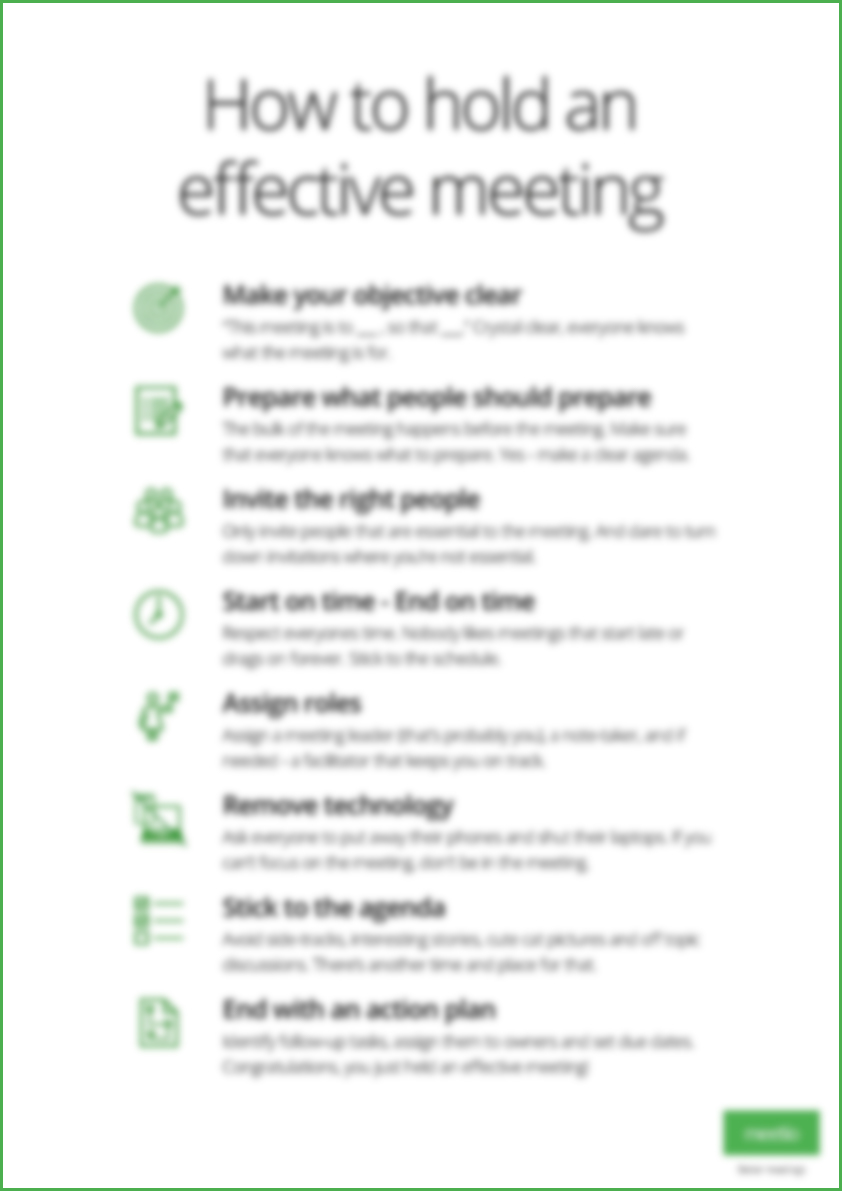
While meetings are typically an inevitable part of business and corporations, they don’t have to be feared, dreaded or mysterious. In fact, meetings should be a positive experience for employees and seen as a necessity in ensuring that team members are productive, communicative and organizationally on the same page. Well thought out meeting invitations is the first step to a successfull meeting, but how do you write one?
Meeting agendas should be the first thing you establish when calling for a meeting, and that agenda should dictate a few things that you can consider for your meeting invitation. First, when you are able to clearly define who should attend the meeting and what their contribution (or at least purpose for being there) should be, you can ensure that this is expressed in the invitation. By doing this, you are able to help set expectations for participants on what is required of them so that they are able to be prepared, alert, and understand their role in a meeting, rather than feeling like it could be a waste of their time.
Setting a positive tone in which everyone who is present participates and is valued for being there is a much better approach than the typical cliche of a meeting: droning on with only a few people dominating the conversation. When you can ensure that invitees to the meeting have a clear idea of their abilities and/or opinions being a necessary part of the meeting, you can help to boost the confidence of your staff and ensure that they are engaged upon entering the meeting.
Summary:
A hallmark of a bad meeting can often be that participants feel there is no purpose. When there isn’t a defined outcome, or a goal that should be reached by the meeting, meeting attendees can lose sight of the importance of meetings, or feel that an email could have been sufficient in covering the intended information. This pattern is one of the reasons that people dread going to meetings in the first place. But, you can change this.
In your meeting invitation, be specific and deliberate in what you expect the outcome of the meeting to be, or what the goal is. When you can show invitees that there is a purpose, and how they will contribute to that purpose, they will feel much more inclined to want to be there. It’s tough to run a gathering at the office when you can feel that participants are distracted, disorganized or unfocused. Ensure that your meeting stay on task by being explicit on the desired outcome from the get go.
Summary:
Then of course, you want to include details on the when and where. Make sure your meeting invite is sent out in plenty of time and ensure that the majority of invitees can attend. Include what time it starts, but also be sure to explicitly say when it ends - employees want to know how much of their time will be taken up. Be sure that appropriate rooms are reserved, and that there can be no confusion with employees trying to find the right place to be. You should also consider expressing if there will be coffee and a snack or lunch included, and allow attendees to bring these things if not. Hungry people in a meeting will not make for a productive meeting.
Summary:The purpose of your meeting invitation is not to instill fear into the employees of your company. Rather, they should serve as a specific, tone-setting tool for inviting important team members to a focused and goal-oriented meeting. You’ll find that when you create a meeting invitation that encompasses these things, attendees will be prepared and alert, the desired outcome will be clear, and your colleagues will thank you for it.
Print it to decorate your meeting rooms with!

These Stories on Meetings
Meetio AB/Logitech Nordics AB
Hamngatan 4
211 22, Malmö
Sweden
Magnus Ladulåsgatan 3
SE-118 65 Stockholm
Sweden
Sweden: +46-(0)10-101 95 60
No comments yet
Let us know what you think!